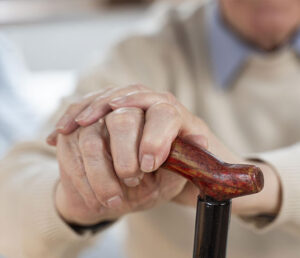I Got My Judgment For Possession From the Judge, But the Tenant is Still Refusing to Move Out After the Possession Date Imposed By the Judge. Now What?
You have finally obtained your “judgment” from the court awarding you possession of the leased premises on a particular date which could be anywhere from “immediate (the date the court enters the judgment) possession” to a possession date seven to ten days in the future.
The possession date comes and goes, and amazingly the tenant (who probably has not paid you rent for many months now and is trashing the place) has not moved out. What do you do?
Technically, as long as there is no “breach of the peace,” the judgment gives you the legal right to retake possession by entering the leased premises, removing all of the tenant’s personal property, placing it on the curb, and changing the locks. This is called a “physical eviction.”
However, your unpleasant experiences with the tenant over these past many months has taught you that the tenant would love nothing more than to provoke you into a confrontation during the physical eviction as an excuse to beat you to a pulp or as a pretext to feigning some sort of injury to the tenant or damage to the tenant’s priceless antique furniture, art and heirlooms for which the tenant will call the police to have you arrested and/or hire an attorney to sue you.
That is why I counsel my landlord clients that unless they can be sure that the tenant and the tenant’s family are not going to be present when the physical eviction takes place, they should coordinate the physical eviction of the tenant with the sheriff of the county in which the leased premises is located.
The sheriff’s office will give you a time and date that they will have one or more sheriff’s deputies standing by outside the leased premises simply for the purpose of keeping the peace during the physical eviction. Once I know that time and date, I then mail a “Notice of Physical Eviction” to the tenant containing the future time and date that the physical eviction will take place. This is not so much a courtesy to the tenant as it is a wake-up call that the tenant best get out before their stuff gets dragged out to the street. If at any point the tenant does voluntarily move out, you can always contact the sheriff’s office to cancel the physical eviction and avert the sheriff’s charges.
The deputy assigned to the physical eviction will not assist you in removing any of the tenant’s property. That is why the landlord needs to arrive at the physical eviction with several helpers who can perform the dirty work of hauling out the tenant’s belongings as quickly as possible and placing them on the curb. Once on the curb, the landlord has no further responsibility for what happens to the tenant’s property. In fact, after a physical eviction takes place in many of the apartment complexes my clients own and/or manage, like sharks to bloody water, a vast number of people seemingly appear out of mid-air to “pick” through the tenant’s belongings as if a huge yard sale was taking place only with even better deals. I only caution my clients and their helpers that they should refrain from the urge to join in the scavenging of the tenant’s belongings as it might create the impression that the landlord’s motive for the physical eviction was for ill-gotten gain rather than merely recovering possession of the leased premises. Again, having the deputy present during the physical eviction is primarily for the protection of the landlord and the landlord’s helpers against bodily harm and the raising of false allegations by the tenant against
So, what does it cost to have a Sheriff’s Deputy stand by during the physical eviction? It varies from county to county. For example, the Peoria County Sheriff currently charges $43.30 per officer per hour (usually two officers) and charges an additional $20.00 to “serve” the tenant with the sheriff’s own notice of the time and date of the physical eviction. The Woodford County Sheriff currently does not charge for the service.
The Tazewell County Sheriff, Robert Huston, currently does not charge for having a deputy standing by during a physical eviction, but he was recently quoted in an article that appeared in the Peoria Journal Star newspaper on February 1, 2014 as saying that it cost the county $66.41 per hour in terms of equipment and labor for that service which is the largest disparity between any cost to the county to deliver a service and the amount of the fee charged. He goes on to say that his office performs about 100 physical evictions per year. So in the future, you will likely start paying a fee to the Tazewell County Sheriff for having a deputy stand by during physical evictions.
On a final note, you can’t legally combine a claim for damage to the unit with your lawsuit for eviction. Therefore, a separate lawsuit has to be brought against the tenant in order to seek recovery for the amount of damage to the leased premises which exceeds the amount of the security deposit (if any). That is why I recommend that the landlord bring a camera and at the conclusion of the physical eviction, take photographs to document any damages to the leased premises. Print the photos out and put the name of the person who took the photograph on the back of the print, the date the photo was taken and what is supposed to be depicted in the photo (e.g., the hole in the wall above the toilet in the bathroom or the cigarette burns on the living room carpet) as without some sort of explanation being placed on the back of the photo, you will be amazed how confusing your photos can become through a lapse of time (“Yea, I see a bicycle and landscape timber, but what was again I was trying to show?”). If you later have a trial on the damage issue, the person who actually took the photos should be the one to testify as to what is depicted in those photos. In the event that the tenant later sues the landlord in protest of the amounts that the landlord has deducted from the security deposit for cleaning and repairs of damages “beyond reasonable wear and tear” (applicable to the legal standard) or in their defense at trial, the tenant argues that the leased premises were not in that bad of shape when the tenant left it, I have always found it to be true at trial that “one picture is worth a thousand words.”




